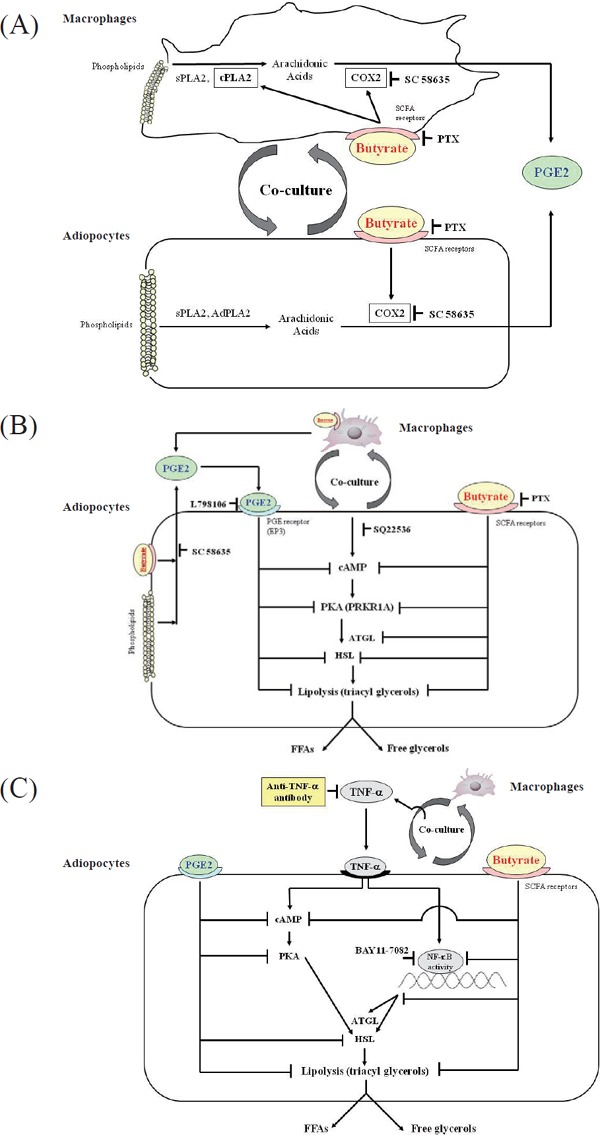Fig 1.

Hypothetical pathways based on the results of the suppressive effect of butyrate depends on the prostaglandin E2 (PGE2)-mediated pathway
Cited from the reference 73
(A) The effect of butyrate on PGE2 production in the interaction between co-cultured macrophages and adipocytes. Co-culture elevates calcium-dependent cytosolic phospholipase A2 (cPLA2) activity in macrophages, secretory PLA2 (sPLA2) activity in adipocytes and macrophages, and the expression of adipose-specific PLA2 (AdPLA2) protein and mRNA in adipocytes. Butyrate elevates cPLA2 activity to a greater degree in macrophages. Co-culture elevates cyclooxygenase-2 (COX2) expression in both cells, and butyrate further enhances COX2 expression in both cells. Butyrate increases PGE2 production more than coculture alone.
(B) The effects of butyrate and PGE2 on lipolysis in co-cultured adipocytes. Co-culture increases cyclic adenosine monophosphate (cAMP) and protein kinase A (PKA) levels in adipocytes and increases the release of free fatty acids (FFAs) and free glycerol into the medium (lipolysis). Butyrate suppresses cAMP and PKA levels, and exogenous PGE2 via prostaglandin E receptor 3 (EP3) has a lesser effect than butyrate. These suppressive effects may reduce the activities of lipases, including adipose triglyceride lipase (ATGL) and hormone-sensitive lipase (HSL), thus resulting in inhibition of lipolysis.
(C) The effects of butyrate and exogenous PGE2 on cAMP- and nuclear factor-kappa B (NF-κB)–mediated lipolysis in tumor necrosis factor-α (TNF-α)–stimulated 3T3-L1 adipocytes. Co-culture increases TNF-α production. TNF-α increases cAMP, leading to increased lipolysis. Anti–TNF-α antibody, butyrate, or exogenous PGE2 decrease cAMP levels and reduce lipolysis in TNF-α–stimulated 3T3-L1 cells. The GPR109A-mediated pathway may be the predominant pathway regulating the effect of butyrate on lipolysis in TNF-α–stimulated 3T3-L1 cells.
PTX (pertussis toxin), an inhibitor blocking G-protein coupled receptor (GPR) 41- and/or GPR109A-mediated signaling; SC 58635, COX2 selective inhibitor; L798106, EP3 selective antagonist; SQ22536, adenylyl cyclase selective inhibitor; BAY11-7082, NF-αB–selective inhibitor
